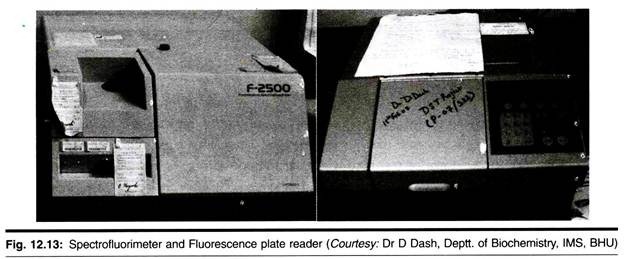Read this article to learn about the techniques, schemes and strains used for isolating microorganisms.
Isolation of Microorganisms:
There are over a million species of microorganisms widely distributed in nature. Less than 1% of the world’s microorganisms have been studied. In fact, only a few hundred species are important for industrial use. A selected list of organisms along with their products is given in Table 19.3.
The good sources for the isolation of microorganisms are soils, lakes and river muds. It is estimated that a gram of soil contains 106—108 bacteria, 104—106 actinomycete spores and 102—104 fungal spores.
The common techniques employed for the isolation of microorganisms are given below:
1. Direct sponge of the soil
2. Soil dilution
3. Gradient plate method (Pour plate and streak plate technique)
4. Aerosol dilution
5. Flotation
6. Centrifugation.
For full details on the isolation procedures, the reader must refer books on microbiology. The actual technique for the isolation of microorganisms depends on the source and the physiological properties of microorganisms.
The general scheme adopted for isolating microorganisms from soil or water source is given below:
i. The sample (soil or water) is diluted with sterile water to which an emulsifying agent (Tween) is added.
ii. Sample is thoroughly mixed and allowed to stand at room temperature.
iii. Supernatant is diluted, 10-1 to 10-10
iv. Various culture media are inoculated with diluted samples and incubated.
v. Colonies from the plates are isolated and identified.
vi. The required pure strains are maintained and preserved.
Enrichment Methods for Isolation of Microorganisms:
The culture conditions can be appropriately modified to isolate certain types of microorganisms. The types of organisms that can be isolated by use of enrichment methods is given in Table 19.4. For instance, thermophiles can be isolated by using high temperature while acidophilus can be isolated in acidic pH. Enrichment methods are certainly useful for quick isolation of specific types of organisms.
Strains of Microorganisms from Unusual Environments:
Biotechnologists often prefer to isolate microorganisms from very extreme and unusual environments. This is done with a hope that such strains may be capable of producing new products of industrial importance. The unusual environments such as cold habitats, high altitudes, deserts, deep sea and petroleum fields are constantly being tried for this purpose. The enrichment methods described above (Table 19.4) will be very useful for isolating unusual strains.
Screening of Metabolites for Isolation of Microorganisms:
The microorganisms can be tested directly for the product formation, and isolated. In fact, the water or soil samples can be directly used or suitably diluted for metabolite screening. Agar plates can be used for screening metabolites formed from the microorganisms. For instance, if the required product is an antibiotic, then the test system consists of the strains of organisms which inhibit the zones, on the agar plates.
The inhibitory activity indicates the possible presence of some antibiotic being produced by the microorganisms. Another example is the isolation of microorganisms producing amylases. When grown on agar plates containing starch, and then stained with iodine, amylase-producing organisms can be identified and isolated.
Screening for New Metabolites, and Isolation of Microorganisms:
Industrial microbiologists continue their search for newer metabolites produced by microorganisms. Research work is particularly directed for identifying chemotherapeutically important products for the treatment of tumors, bacterial diseases (newer antibiotics against resistant strains) and viral diseases, besides several other substances (e.g. hormones, enzyme inhibitors). In addition, isolation of microorganisms for improvement of food industry, and for efficient degradation of the environmental pollutants and hazardous chemicals also assumes significance.
Preservation of Microorganisms:
There are distinct methods for preservation of microorganisms. The most important being storage by refrigeration, freezing and lyophilization.

